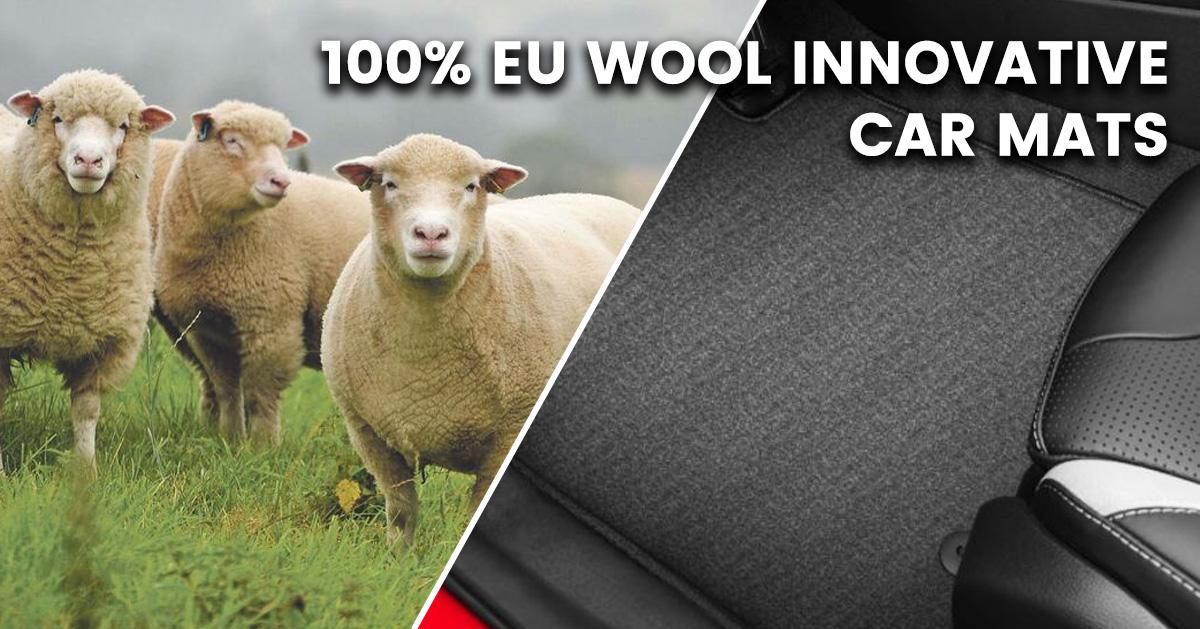Exhibitors 2020
- CULTURAL HERITAGE
- AEROSPACE
- ARTIFICIAL INTELLIGENCE
- DRONES
- EDUCATION
- ENERGY & SUSTAINABILITY
- FOOD & AGRICULTURE
- HOME AUTOMATION
- INTERNET OF THINGS
- KIDS & EDUCATION
- NEW MANUFACTURING
- OPEN SOURCE
- RECYCLING & UPCYCLING
- ROBOTICS
- SCIENCE
- 3D PRINTING
- ART
- ARTISANS & NEW CRAFT
- BIOLOGY
- FABRICATION
- GAMES
- HACKS
- STEAM PUNK
- WELLNESS & HEALTHCARE
- YOUNG MAKERS (< 18)
- 3D SCANNING
- MUSIC & SOUND
- FASHION & WEARABLES
100% Eu Wool Innovative Car Mats
Currently car mats are the most consumed car components. They typically consist of one or more layer of backing (mostly polypropylene fabrics), joined by CaCO3 filled styrene-butadiene latex
rubber (SBR), and face fibers (majority being nylon 6 and nylon 6,6 textured yarns) tufted into the primary backing.
Wool is a traditional fibre used for high quality, conventional garments, but coarse wool from EU sheep farming is unsuitable for clothing.
Nevertheless, coarse wool has excellent technical properties suitable for non-clothing applications such has components for car’s interiors.
The project idea is to develop innovative car mats made of 100% coarse wool from EU sheep farming. This technology will enable to produce car mats that are even more environmentally friendly and better performing than those currently produced and recyclable at the end of their life.
They have an upper layer made of 100% wool felt, and a lower layer made of protein adesive made of partially hydrolysed wool that stick the fibres replacing rubber latex. Silica form carbonized rice husk is used as fillers to impart both abrasion resistance and black decorative patterns.
Wool is made of keratin, a natural protein which is stable in neutral and acidic media. To the contrary, wool fibers in mild alkali solutions and controlled conditions (temperature and time) undergo a partial disruption producing a protein glue that sticks the remaining fibers each other. This reaction will be applied for the production of the innovative 100% wool car carpeting.
Rice husk is the hard protecting covering of grains of rice and represents an organic waste produced in large amount. It’s the major by-product of the rice milling and agrobased biomass industry. Rice husk is a cellulose-based material which is burnt for fuel, producing energy and ashes with approximately 90% silica.
Silica is already used in tyre manufacturing: it increases tyre’s wet grip and cuts its rolling resistance by around 30%, that translates into a 5-7% reduction in fuel consumption.
Some of the most important companies, already use silica from rice husk ashes as filler for rubber compounding, reducing the use of “carbon black”. They verified several benefits like more grip and abrasion resistance.
Added to the innovative car mats, silica is expected to improve abrasion resistance in addition to impart black decorative patterns.
The process layout: the lower felt is treated with a mild alkali solution to produce the protein adhesive by partial hydrolysis of the wool fibres. The adhesive laminates, penetrates and binds the upper felt to the lower one by compression of the embosser cylinder. Patterns are made by the black protein glue that stick the fibers from the two felts each other. As with conventional latex, lamination is improved by small amount of mineral fillers such as silica from carbonised husk which also give black decorative patterns and resistance to abrasion. After coupling the mat is neutralised, dried and die-cut.
The innovative car mat will be flame retardant, resistant to abrasion, will improve car interior air absorbing VOCs and reduce noise. New fashion effects may be imparted by Silica from carbonised husk applied by embosser cylinder so that dyeing is not needed.
The composition of the innovative car mat make it suitable to be recycled or transformed into amendment-fertiliser for agriculture. The innovative wool mats may be recycled and valorised at the end of their life. Indeed, they are made with materials suitable to be recycled or transformed into amendment-fertiliser for agriculture. Wool has already been transformed into organic nitrogen fertiliser by green hydrolysis conversion with superheated water.
Fondazione ITS TAM Biella
ITS TAM BIELLA TAM is the Higher Technical Institute based in Biella for those who want to pursue their dreams in the real world of fashion and textiles. IITS TAM carries out with its students many innovation and research projects on new materials and new production processes, thanks to the collaboration with its teachers who come from CNR research institutes in Biella and Turin Polytechnic or from the business world.
Lorenzo Ranotto, Edoardo Avidano, Lorenzo Gardini e Gabriele Nicola are first year students of the Superior Product Technician Class and they carried out this project with Prof. Alessia Patrucco of the CNR of Biella



















































































